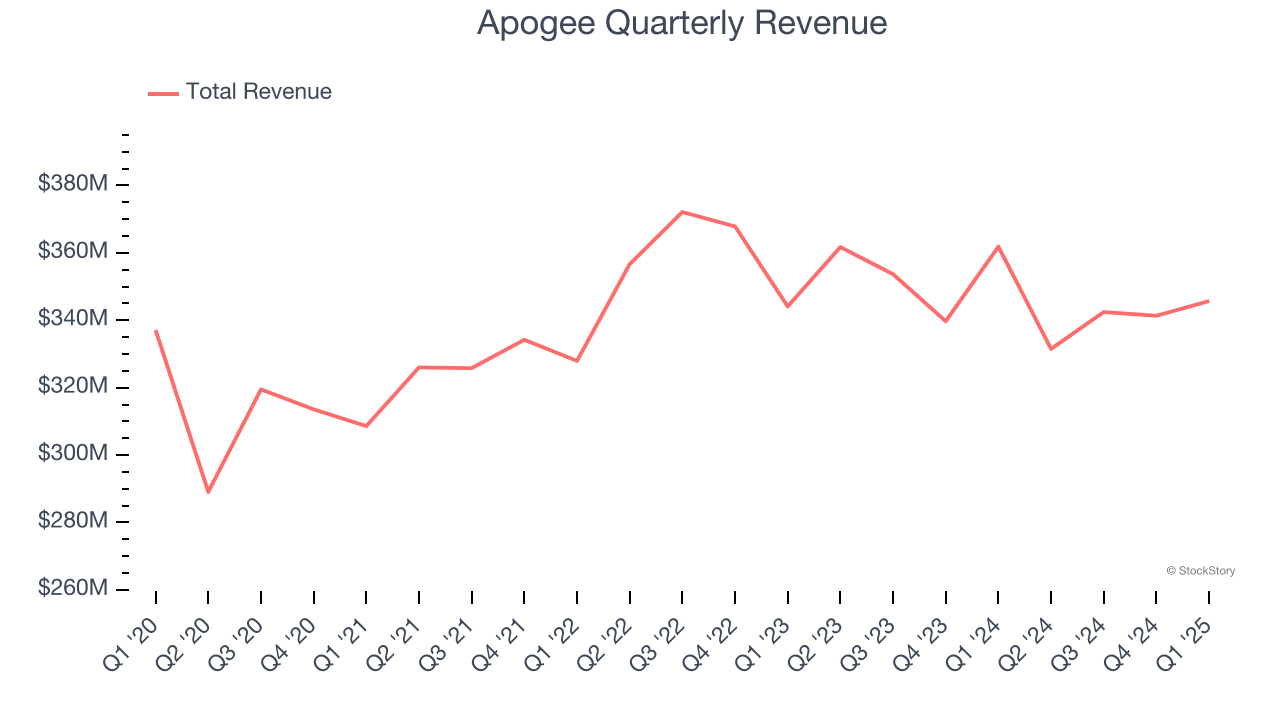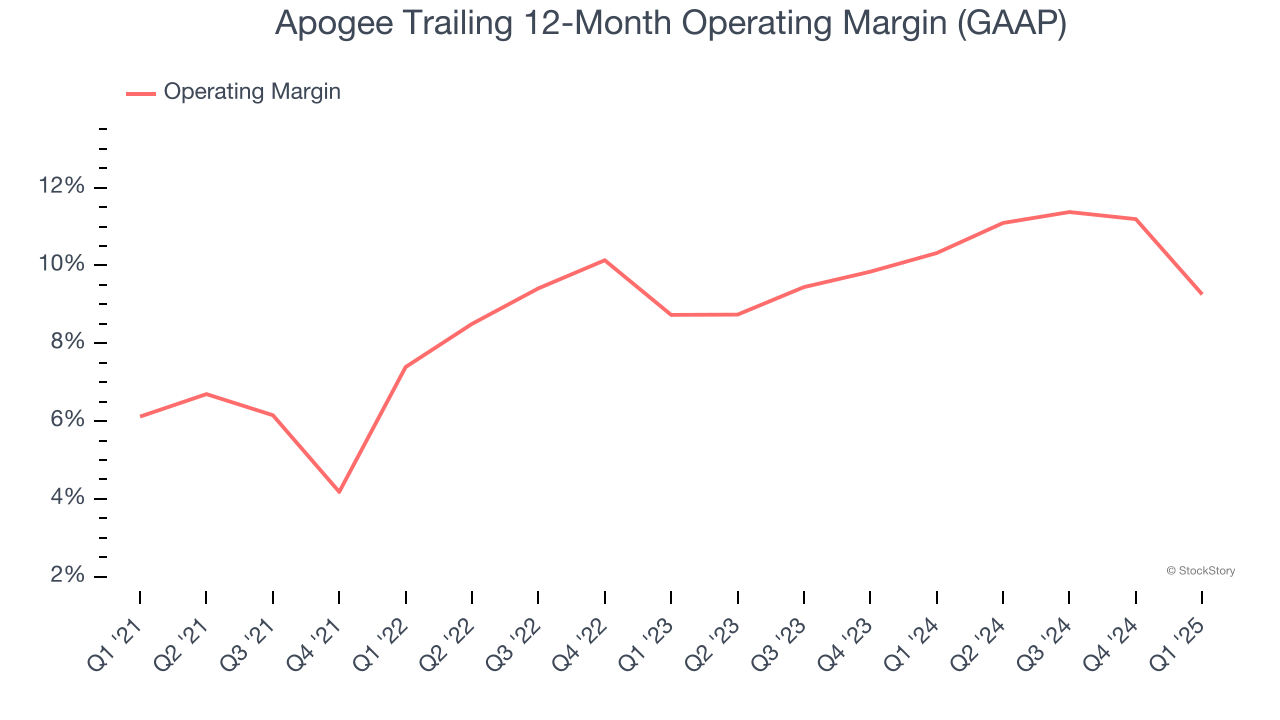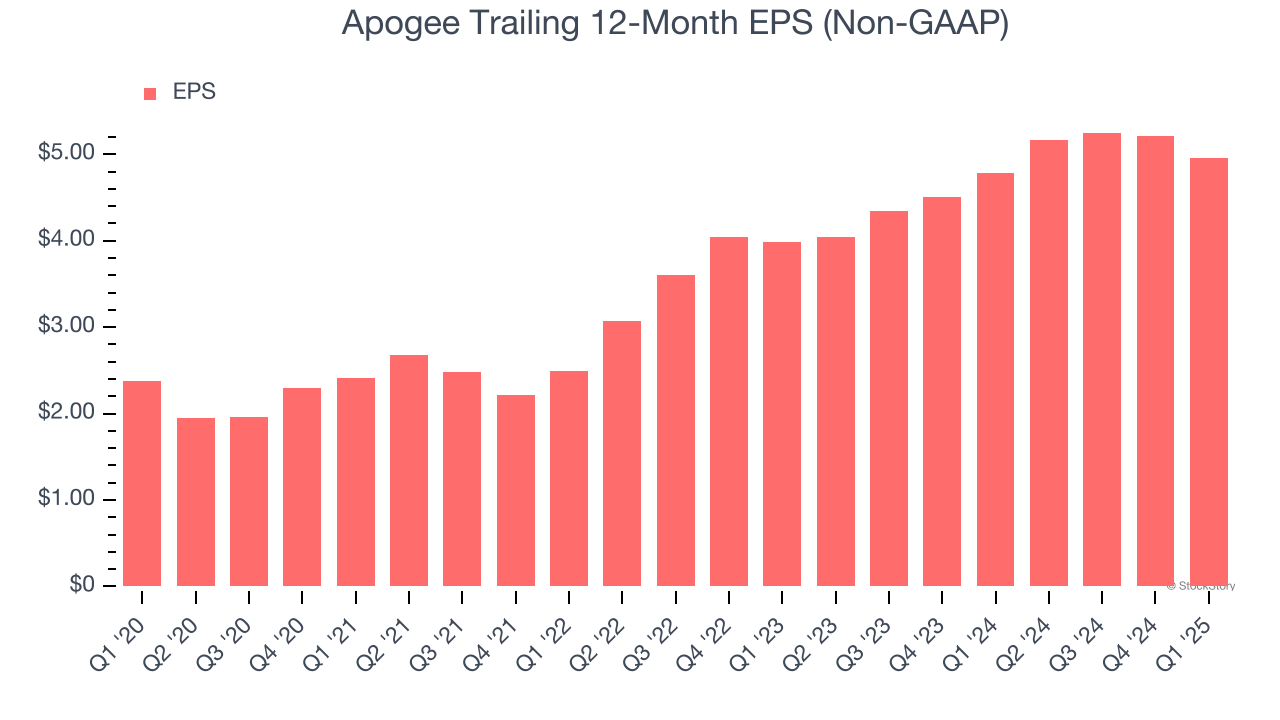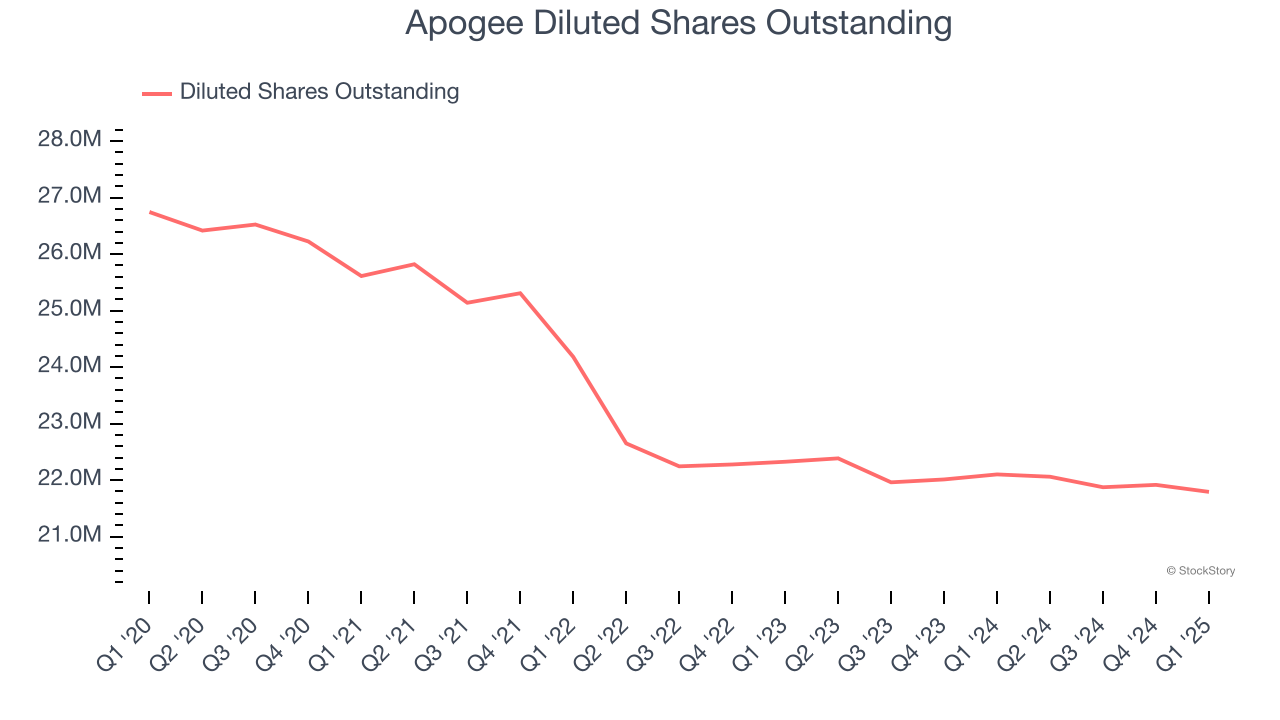
Architectural products company Apogee (NASDAQ:APOG) reported revenue ahead of Wall Street’s expectations in Q1 CY2025, but sales fell by 4.5% year on year to $345.7 million. The company’s full-year revenue guidance of $1.4 billion at the midpoint came in 2% above analysts’ estimates. Its non-GAAP profit of $0.89 per share was 2.3% above analysts’ consensus estimates.
Is now the time to buy Apogee? Find out by accessing our full research report, it’s free.
Apogee (APOG) Q1 CY2025 Highlights:
- Revenue: $345.7 million vs analyst estimates of $331.8 million (4.5% year-on-year decline, 4.2% beat)
- Adjusted EPS: $0.89 vs analyst estimates of $0.87 (2.3% beat)
- Adjusted EBITDA: $41.11 million vs analyst estimates of $37.46 million (11.9% margin, 9.7% beat)
- Management’s revenue guidance for the upcoming financial year 2026 is $1.4 billion at the midpoint, beating analyst estimates by 2% and implying 2.9% growth (vs -3.9% in FY2025)
- Adjusted EPS guidance for the upcoming financial year 2026 is $3.83 at the midpoint, missing analyst estimates by 10.5%
- Operating Margin: 1.8%, down from 9.5% in the same quarter last year
- Free Cash Flow Margin: 5.5%, down from 16.2% in the same quarter last year
- Market Capitalization: $1.01 billion
Company Overview
Involved in the design of the Apple Store on Fifth Avenue in New York City, Apogee (NASDAQ:APOG) sells architectural products and services such as high-performance glass for commercial buildings.
Commercial Building Products
Commercial building products companies, which often serve more complicated projects, can supplement their core business with higher-margin installation and consulting services revenues. More recently, advances to address labor availability and job site productivity have spurred innovation. Additionally, companies in the space that can produce more energy-efficient materials have opportunities to take share. However, these companies are at the whim of commercial construction volumes, which tend to be cyclical and can be impacted heavily by economic factors such as interest rates. Additionally, the costs of raw materials can be driven by a myriad of worldwide factors and greatly influence the profitability of commercial building products companies.
Sales Growth
Reviewing a company’s long-term sales performance reveals insights into its quality. Any business can have short-term success, but a top-tier one grows for years. Unfortunately, Apogee struggled to consistently increase demand as its $1.36 billion of sales for the trailing 12 months was close to its revenue five years ago. This wasn’t a great result and suggests it’s a lower quality business.

We at StockStory place the most emphasis on long-term growth, but within industrials, a half-decade historical view may miss cycles, industry trends, or a company capitalizing on catalysts such as a new contract win or a successful product line. Apogee’s recent performance shows its demand remained suppressed as its revenue has declined by 2.8% annually over the last two years. Apogee isn’t alone in its struggles as the Commercial Building Products industry experienced a cyclical downturn, with many similar businesses observing lower sales at this time. 
This quarter, Apogee’s revenue fell by 4.5% year on year to $345.7 million but beat Wall Street’s estimates by 4.2%.
Looking ahead, sell-side analysts expect revenue to remain flat over the next 12 months. Although this projection implies its newer products and services will catalyze better top-line performance, it is still below the sector average.
Unless you’ve been living under a rock, it should be obvious by now that generative AI is going to have a huge impact on how large corporations do business. While Nvidia and AMD are trading close to all-time highs, we prefer a lesser-known (but still profitable) stock benefiting from the rise of AI. Click here to access our free report one of our favorites growth stories.
Operating Margin
Apogee has done a decent job managing its cost base over the last five years. The company has produced an average operating margin of 8.4%, higher than the broader industrials sector.
Analyzing the trend in its profitability, Apogee’s operating margin rose by 3.1 percentage points over the last five years, showing its efficiency has improved.

This quarter, Apogee generated an operating profit margin of 1.8%, down 7.7 percentage points year on year. Since Apogee’s operating margin decreased more than its gross margin, we can assume it was less efficient because expenses such as marketing, R&D, and administrative overhead increased.
Earnings Per Share
Revenue trends explain a company’s historical growth, but the long-term change in earnings per share (EPS) points to the profitability of that growth – for example, a company could inflate its sales through excessive spending on advertising and promotions.
Apogee’s EPS grew at a spectacular 15.8% compounded annual growth rate over the last five years, higher than its flat revenue. This tells us management responded to softer demand by adapting its cost structure.

We can take a deeper look into Apogee’s earnings quality to better understand the drivers of its performance. As we mentioned earlier, Apogee’s operating margin declined this quarter but expanded by 3.1 percentage points over the last five years. Its share count also shrank by 18.5%, and these factors together are positive signs for shareholders because improving profitability and share buybacks turbocharge EPS growth relative to revenue growth. 
Like with revenue, we analyze EPS over a shorter period to see if we are missing a change in the business.
For Apogee, its two-year annual EPS growth of 11.5% was lower than its five-year trend. We still think its growth was good and hope it can accelerate in the future.
In Q1, Apogee reported EPS at $0.89, down from $1.14 in the same quarter last year. Despite falling year on year, this print beat analysts’ estimates by 2.3%. Over the next 12 months, Wall Street expects Apogee’s full-year EPS of $4.96 to shrink by 14.5%.
Key Takeaways from Apogee’s Q1 Results
We were impressed by how significantly Apogee blew past analysts’ EBITDA expectations this quarter. We were also excited its revenue outperformed Wall Street’s estimates by a wide margin. On the other hand, its full-year EPS guidance missed significantly. Overall, we think this was still a solid quarter with some key areas of upside. The stock remained flat at $45.90 immediately following the results.
Sure, Apogee had a solid quarter, but if we look at the bigger picture, is this stock a buy? When making that decision, it’s important to consider its valuation, business qualities, as well as what has happened in the latest quarter. We cover that in our actionable full research report which you can read here, it’s free.
